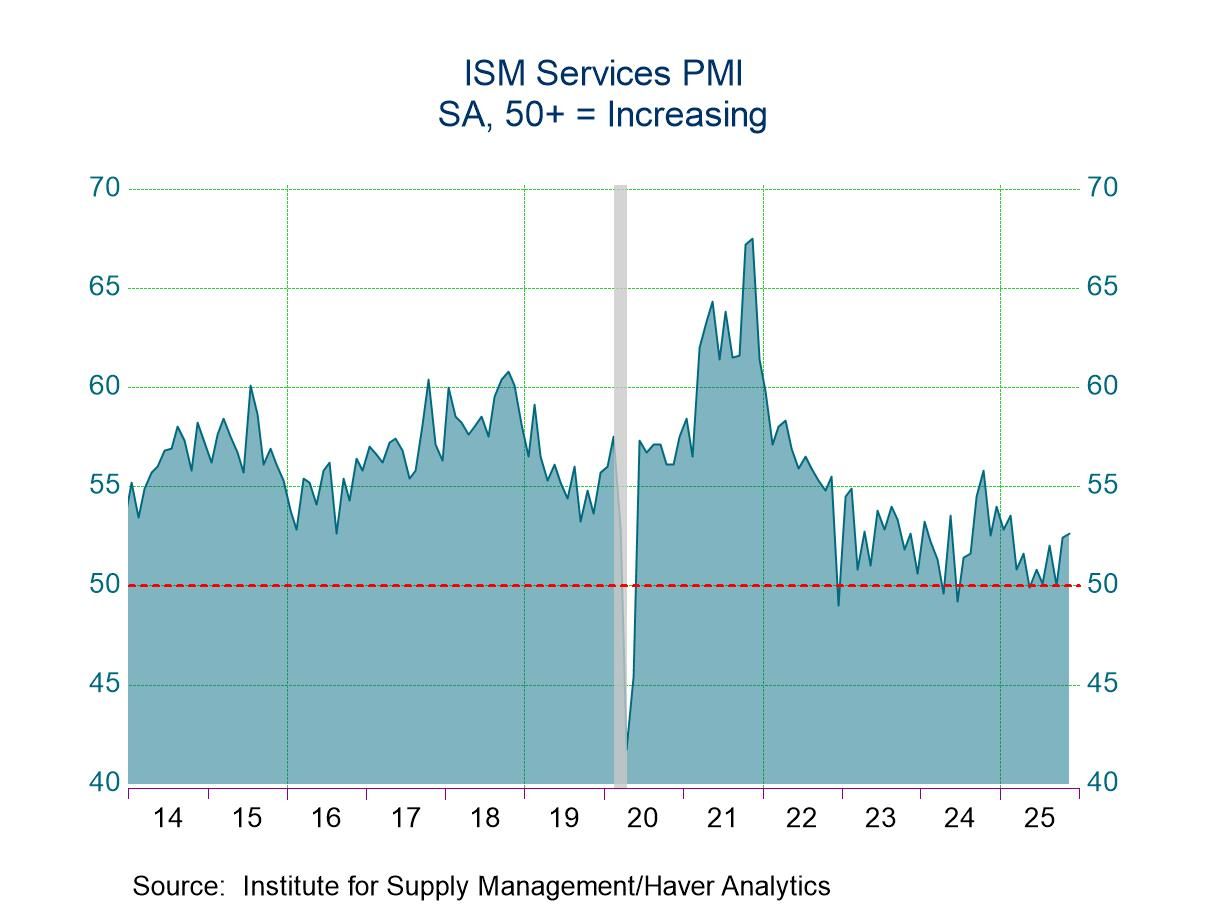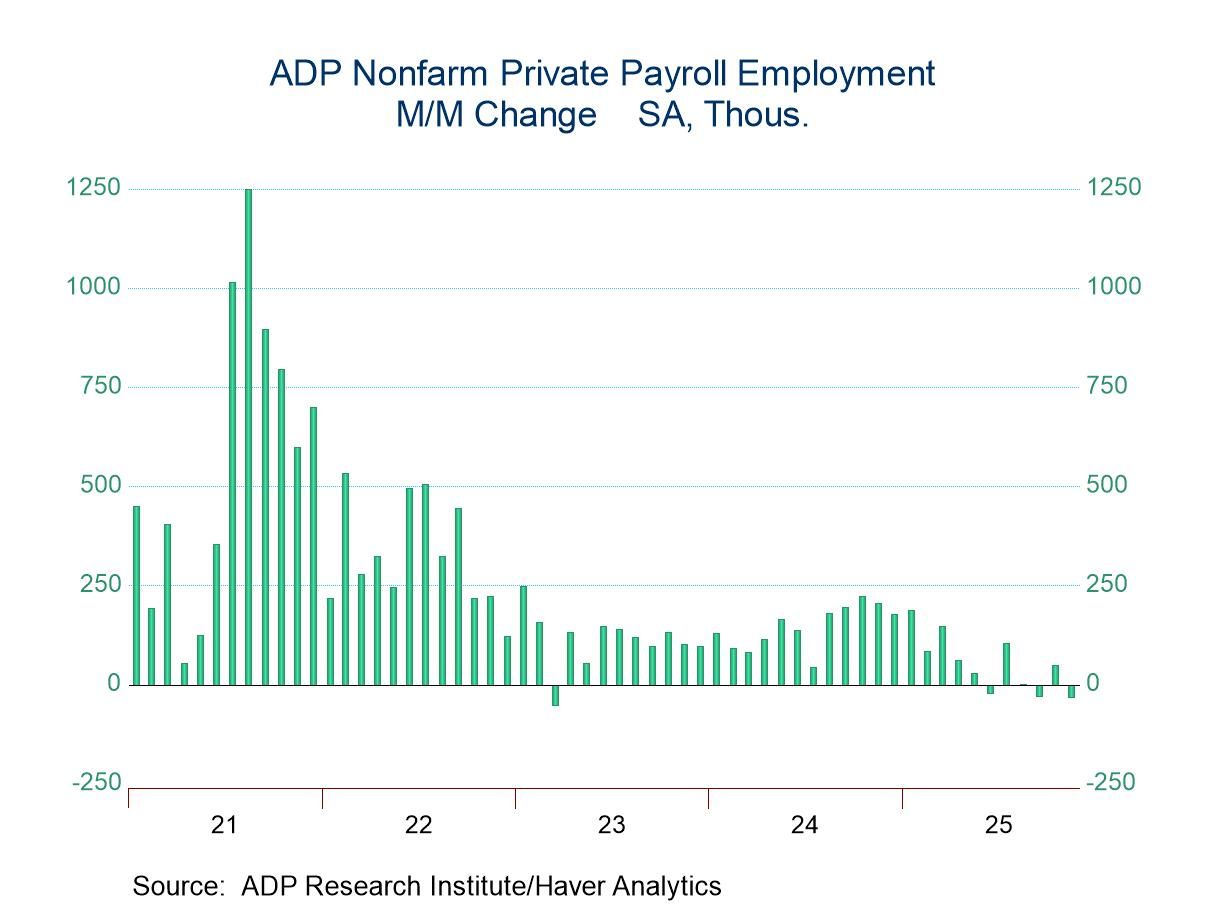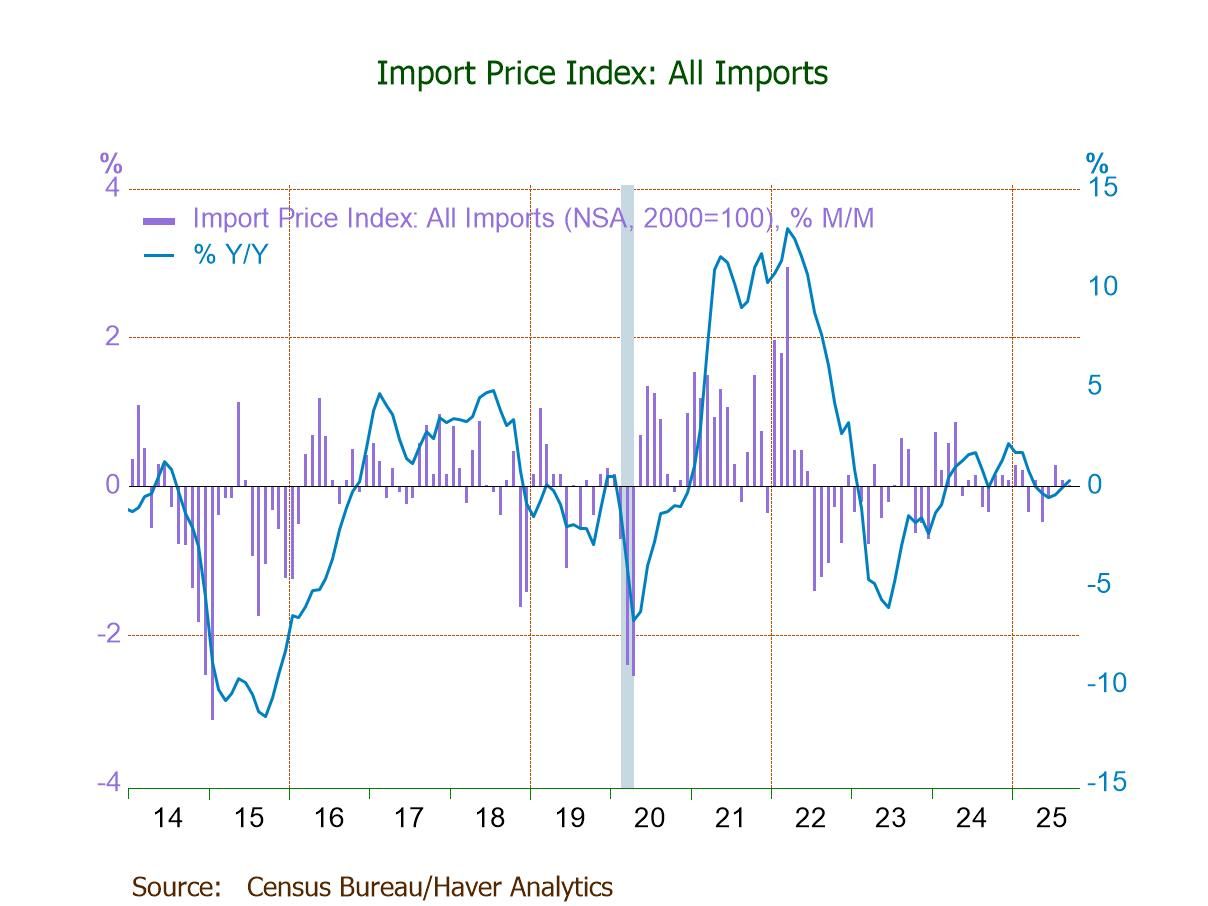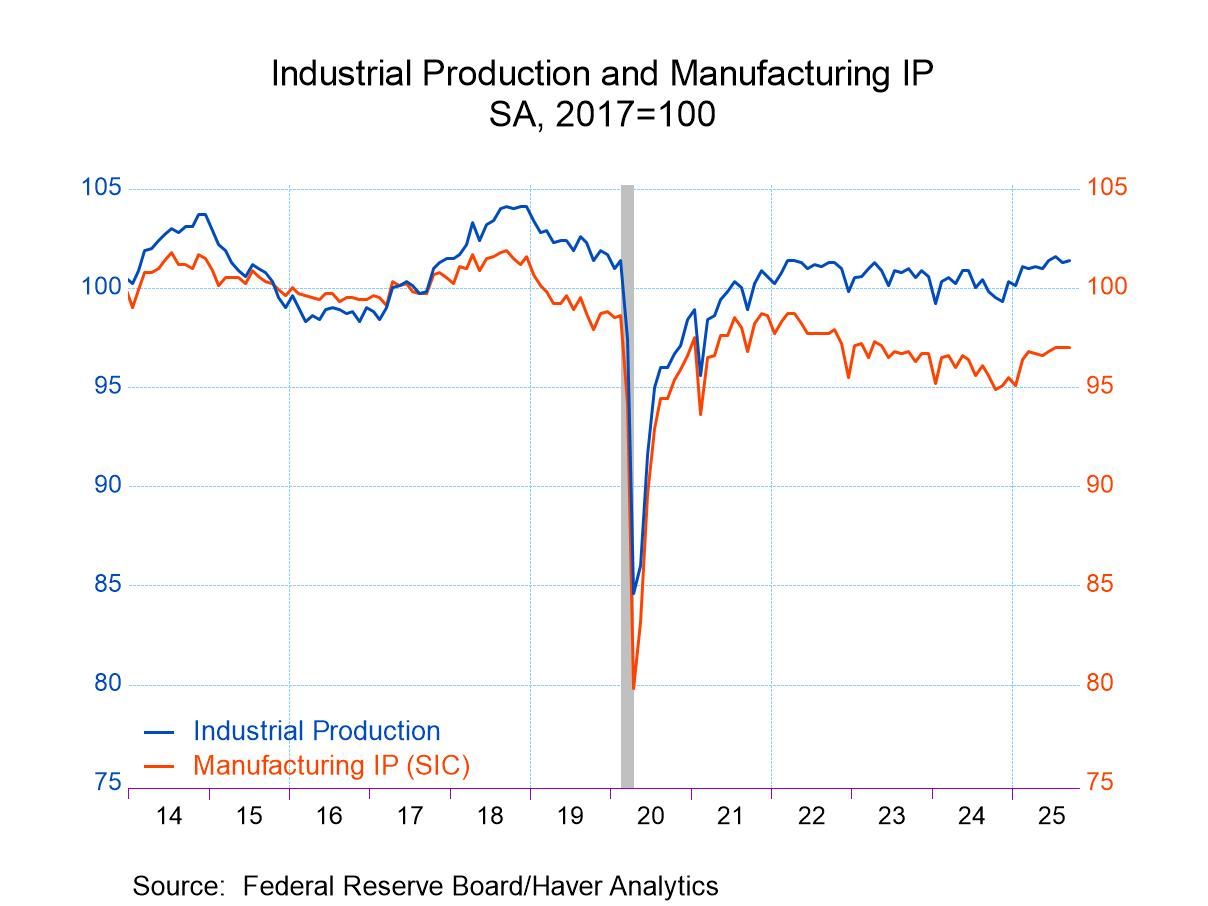U.S. Q3 GDP Growth Revised Up in Third Estimate
by:Sandy Batten
|in:Economy in Brief
Summary
- GDP growth revised up to 2.3% q/q SAAR from 2.1%.
- Upward revision to consumption with offsetting small revisions elsewhere.
- Price inflation revised up to second fastest quarterly rate in 40 years.
- Rise in Q3 corporate profits revised down to a still-solid 3.4% q/q from 4.3%.


Real GDP growth in Q3 2021 was revised up slightly to 2.3% q/q SAAR in the third estimate from 2.1% in the second estimate and 2.0% in the advance estimate, still down markedly from the 6.7% increase in Q2. The Action Economics Forecast Survey had looked for no revision in this estimate for Q3. Compared to a year ago, GDP grew 4.9% in Q3, the same as in the second estimate and also in the advance report.
The lofty 4.3% q/q (not annualized) increase in corporate profits was revised down to a still-solid 3.4% gain and were up 19.7% y/y, revised down slightly from 20.7% in the first estimate. Profits from domestic nonfinancial industries were revised down while profits from abroad were revised up, extending their first quarterly gain in three quarters.
Personal consumption expenditures were revised up to a 2.0% q/q SAAR increase in the third estimate from 1.7% in the second and 1.6% in the advance report. Still, this was a significant slowdown from the 12.0% gain in Q2 and so remained the major factor behind the Q2 slowdown in overall GDP growth.
Business nonresidential fixed investment was revised up to 1.7% q/q SAAR from 1.5% in the second estimate. This reflected upward revisions to structures and spending on equipment (both smaller declines than previously reported) and another downward revision to spending on intellectual property products (+9.1 from +9.3%). The initially reported decline in inventories was revised slightly smaller such that their contribution to overall GDP growth was revised up marginally to 2.20%-points from 2.13%-points in the second estimate. The 8.3% q/q SAAR decline in residential investment reported in the second estimate was revised up to a 7.7% decline, the same pace of decline as in the advance report.


The drop in exports in Q3 was revised even larger to -5.3% q/q SAAR from -3.0% q/q in the second estimate. The rise in imports was revised down to 4.7% from 5.8%. As a result the trade deficit was revised slightly wider, and it subtracted a little more from overall GDP growth than previously estimated (-1.26%-points versus -1.16%-points).
Government outlays growth was unrevised at 0.9% q/q SAAR but the drop in Federal government expenditures was revised deeper to -5.1% from -4.9% while the rise in spending by state and local governments was revised up to 4.9% from 4.7%.
Inflation as measured by the indexes in this report remained elevated and was revised up slightly in the third estimate. The GDP price index increased 6.0% q/q SAAR in the third estimate, up from 5.9% in the second estimate and 5.7% in the advance report. The revised Q3 reading was the second highest since Q4 1981, surpassed only by the 6.1% rise in Q2. The 5.3% q/q gain in the PCE price index was not revised in this estimate. However, the 4.5% q/q increase in the core PCE price index was revised up slightly to 4.6%. The increase in prices of nonresidential fixed investment was not revised at a 4.3% q/q increase while the rise in prices of residential investment was revised up to a 14.8% q/q gain from 14.4%. This was the third consecutive quarter in which prices of residential investment posted double-digit increases. The rise in export prices was revised down slightly while the gain in import prices were revised up slightly. Prices paid by governments rose an upwardly revised 6.1% from 6.0% in the second estimate and 5.4% in the advance report.
The GDP figures can be found in Haver's USECON and USNA databases. USNA contains virtually all of the Bureau of Economic Analysis' detail in the national accounts. Both databases include tables of the newly published not seasonally adjusted data. The Action Economics consensus estimates can be found in AS1REPNA.


Sandy Batten
AuthorMore in Author Profile »Sandy Batten has more than 30 years of experience analyzing industrial economies and financial markets and a wide range of experience across the financial services sector, government, and academia. Before joining Haver Analytics, Sandy was a Vice President and Senior Economist at Citibank; Senior Credit Market Analyst at CDC Investment Management, Managing Director at Bear Stearns, and Executive Director at JPMorgan. In 2008, Sandy was named the most accurate US forecaster by the National Association for Business Economics. He is a member of the New York Forecasters Club, NABE, and the American Economic Association. Prior to his time in the financial services sector, Sandy was a Research Officer at the Federal Reserve Bank of St. Louis, Senior Staff Economist on the President’s Council of Economic Advisors, Deputy Assistant Secretary for Economic Policy at the US Treasury, and Economist at the International Monetary Fund. Sandy has taught economics at St. Louis University, Denison University, and Muskingun College. He has published numerous peer-reviewed articles in a wide range of academic publications. He has a B.A. in economics from the University of Richmond and a M.A. and Ph.D. in economics from The Ohio State University.






